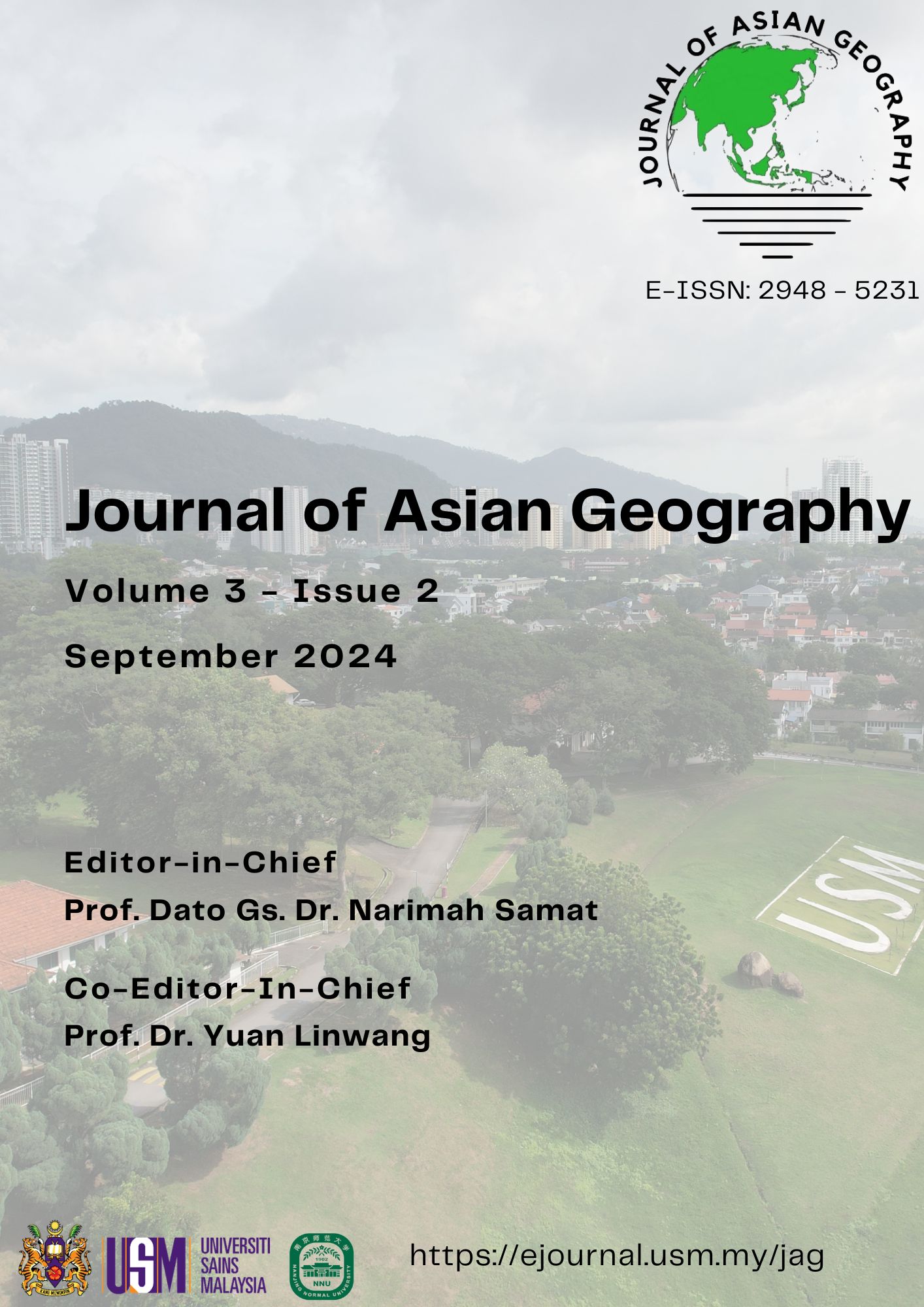Development of an Urban Growth Model Using Geographical Information System in Malaysia: A Review
DOI:
https://doi.org/10.36777/jag2024.3.2.8Keywords:
Urban Model, GIS, Urbanization, Land Use, Urban PlanningAbstract
Urbanization is one of the major problems faced by various countries over time. The process by which rural regions transform into cities and people move from rural to urban areas is known as urbanization. Urban land use development is influenced by a variety of factors, including physical, socioeconomic, and environmental issues. While urbanization benefits many stakeholders by enhancing social, economic, and infrastructure aspects, it also poses risks to people's safety and harms the physical, social, and cultural landscape as more buildings are constructed. Consequently, spatial models for urban growth are often used in planning to develop strategies for controlling land use actions, such as GIS, GIS-based remote sensing, CA-Markov, AHP, and MCE. GIS and CA-Markov are among the models widely employed by researchers to simulate land use change. Malaysia also tends to utilize urban growth models as part of its efforts to plan for sustainable cities in the future. Therefore, this study was conducted to assess and review the use of GIS in developing an urban growth model in the Malaysian context. The results indicate that GIS and other models or techniques can serve as a strategic framework for urban development policy.

Downloads
Published
Issue
Section
License
Copyright (c) 2024 Journal of Asian Geography

This work is licensed under a Creative Commons Attribution 4.0 International License.

